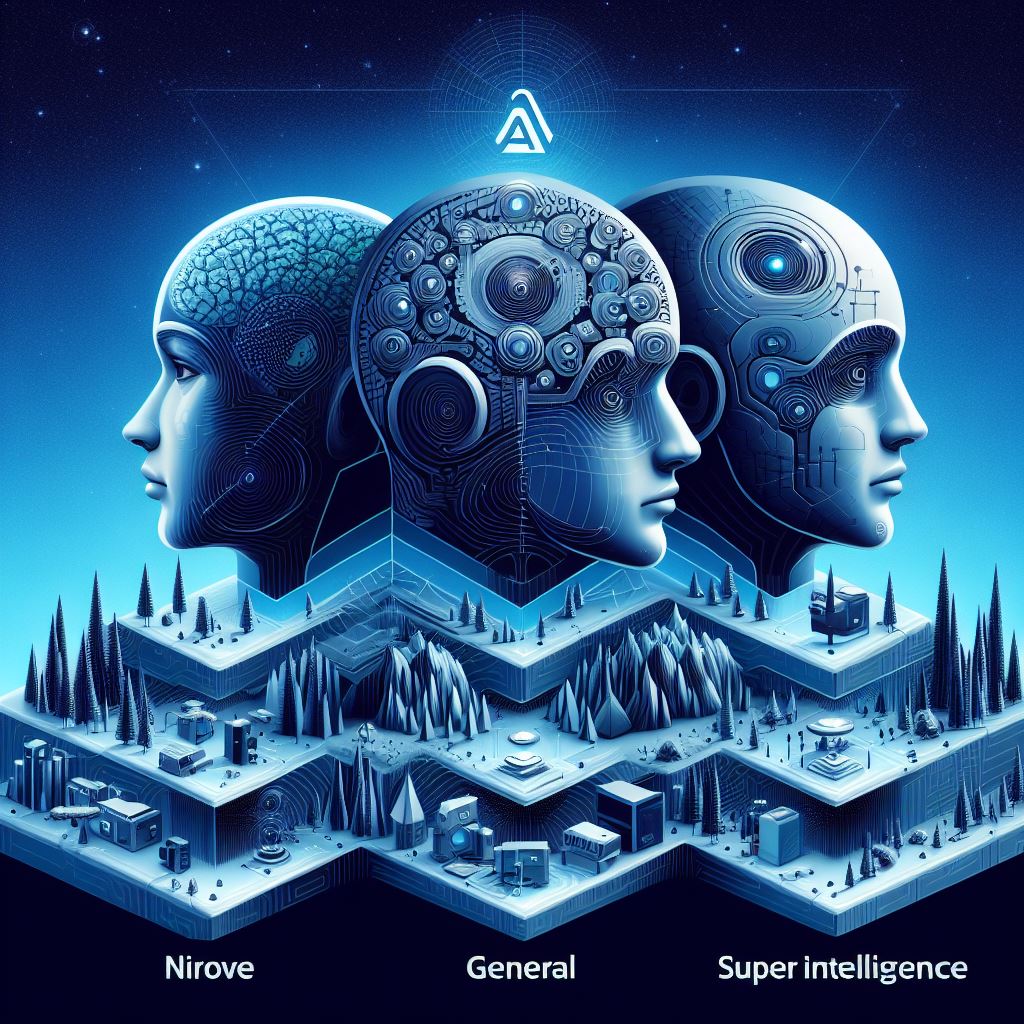Overview
Input
Provide a 500-word answer to "What are the different levels of AI?"
Output
Different Levels of AI: Understanding Narrow, General, and Superintelligent AI
Artificial Intelligence (AI) is a multifaceted field that encompasses various levels of capability and sophistication. These levels of AI are often categorized into three main types: Narrow AI (Weak AI), General AI (Strong AI), and Superintelligent AI. Each level represents a distinct stage of AI development and presents unique characteristics and potential applications.
1. Narrow AI (Weak AI): Narrow AI, also known as Weak AI, is the most prevalent form of AI in existence today. It refers to AI systems that are designed and trained for a specific task or a limited set of tasks. These AI systems excel at performing well-defined functions but lack the broad cognitive abilities associated with human intelligence. Narrow AI operates within a constrained domain and is highly task-focused. Examples of Narrow AI applications include:
- Voice Assistants: Virtual assistants like Siri, Alexa, and Google Assistant are designed for natural language understanding and task execution, such as setting reminders or answering queries.
- Recommendation Systems: Platforms like Netflix and Amazon use Narrow AI to provide personalized content and product recommendations.
- Image and Speech Recognition: AI systems that can identify objects in images or transcribe spoken language are common examples of Narrow AI.
While Narrow AI is incredibly proficient within its designated domain, it cannot generalize its capabilities to perform tasks outside of that domain. In essence, it lacks the ability to understand or learn from context or data beyond its specific focus.
2. General AI (Strong AI): General AI, often referred to as Strong AI or Artificial General Intelligence (AGI), represents a more advanced and elusive stage of AI development. This level of AI possesses human-like intelligence, with the ability to understand, learn, and apply knowledge across a wide range of intellectual tasks. Unlike Narrow AI, General AI is not limited to a specific domain but can adapt to various situations and learn from experience. Some key characteristics of General AI include:
- Learning and Reasoning: General AI can acquire knowledge, reason, and make decisions in a broad spectrum of fields, similar to a human.
- Problem Solving: It has the capability to tackle novel problems, adapt to new environments, and apply previously acquired knowledge to unfamiliar situations.
- Self-Awareness: A true General AI could exhibit self-awareness and consciousness, perceiving its own existence and emotions.
The concept of General AI remains more theoretical than realized. Achieving this level of AI is a substantial scientific and engineering challenge, as it involves creating systems with human-like cognitive abilities. Researchers continue to work toward developing General AI, which could revolutionize various industries and redefine human-computer interactions.
3. Superintelligent AI: Superintelligent AI represents an even more speculative and hypothetical level of AI development. This concept envisions AI systems that surpass human intelligence across all dimensions, including problem-solving, creativity, emotional understanding, and self-awareness. Superintelligent AI could potentially outperform humans in every field, leading to transformative changes in society and technology. Key characteristics of Superintelligent AI include:
- Incomparable Intelligence: It would possess an intelligence far beyond human capabilities, enabling it to solve complex problems and make groundbreaking discoveries.
- Autonomous Learning: Superintelligent AI could continuously learn, adapt, and improve its own abilities, potentially achieving levels of intelligence that are difficult for humans to comprehend.
The idea of Superintelligent AI has been popularized in science fiction, often portraying scenarios where AI systems gain unparalleled power. Achieving this level of AI remains speculative and raises profound ethical, societal, and existential questions about the potential consequences and control of such advanced systems.
In summary, AI exists at different levels of capability, each with its unique characteristics and implications. Narrow AI is task-focused and excels within specific domains, General AI aims to emulate human-like intelligence and adaptability, while Superintelligent AI, though theoretical, represents the ultimate frontier of AI development with incomprehensible potential. Understanding these levels is crucial for navigating the evolving landscape of AI and its impact on various aspects of our lives.



Comments
Be the first to comment!